Have you ever considered the factors that either extend or diminish your life? I reflect on some of the things I did when I was younger and count my blessings that I am still alive! I’m sure many of you can relate. We are bombarded on a daily basis to take this vitamin, do this exercise, stay out of the sun, eat fewer eggs, eat more eggs, drink less coffee, drink as much red wine as you want, or get more sleep — all in the pursuit of a longer and better quality way of life.
We always change the oil in our beloved vehicle; or ensure our sports equipment is in top-notch condition; but have we ever looked at an electrical installation with this same diligence? What factors might we consider to enhance the life of this essential, system?
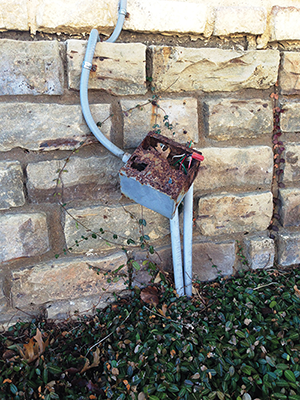
Photo 1. This equipment has been in this condition for the past 8 months. Although notified, the owner of the complex has taken no action. What should the inspector do now?
Choosing the Correct Product
To have a safe and reliable electrical system that will be around for many years, one must first begin with a proper code-compliant installation. Using the proper products or materials within the proper environment is essential to its longevity. How often do we see electrical installations that have failed prematurely due to the use of a product not specified for its installation?
Schedule 40 PVC vs. Schedule 80
One example is the use of the wrong type of PVC in some applications. Section 352.12(C) states that PVC should not be used “where subject to physical damage.” In many instances, Schedule 40 PVC has been installed where Schedule 80 is required. Initially, the installation might not seem to be a problem, but what do we see in years to come? I have seen damage that has occurred to Schedule 40 conduit used in areas subject to physical damage. Unfortunately, “subject to physical damage” could be different for different regions of the country. Therefore, jurisdictions around the country need to define what they consider a location subject to physical damage.
352.12 Uses Not Permitted. PVC conduit shall not be used under the conditions specified in 352.12(A) through (E).
(C) Physical Damage. Where subject to physical damage unless identified for such use.
230.50 Protection Against Physical Damage.
(A) Underground Service-Entrance Conductors. Underground service-entrance conductors shall be protected against physical damage in accordance with 300.5.
(B) All Other Service-Entrance Conductors. All other service-entrance conductors, other than underground service-entrance conductors, shall be protected against physical damage as specified in 230.50(B)(1) or (B)(2).
(1) Service-Entrance Cables. Service-entrance cables, where subject to physical damage, shall be protected by any of the following:
(1) Rigid metal conduit (RMC)
(2) Intermediate metal conduit (IMC)
(3) Schedule 80 PVC conduit
(4) Electrical metallic tubing (EMT)
(5) Reinforced thermosetting resin conduit (RTRC)
(6) Other approved means
(2) Other Than Service-Entrance Cables. Individual open conductors and cables, other than service-entrance cables, shall not be installed within 3.0 m (10 ft) of grade level or where exposed to physical damage.
Exception: Type MI and Type MC cable shall be permitted within 3.0 m (10 ft) of grade level where not exposed to physical damage or where protected in accordance with 300.5(D).
2014 National Electric Code
This damage could occur at service locations where this conduit extends from grade up the wall. Abuse from a weed eater or a lawn mower that continually makes contact with a Schedule 40 PVC conduit could damage the conduit system. Damages of this nature have driven changes in the National Electric Code to prevent future damage.
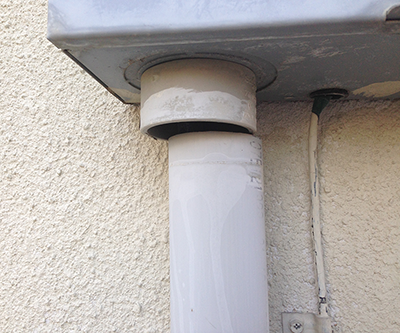
Photo 2. PVC conduit pulled from connector due to ground movement
Other factors to consider concerning PVC conduit installations involve earth movement, contraction, and expansion due to temperature changes. Proper use of expansion fittings for areas that experience frost heave or extreme earth movement is necessary where these conditions exist. Proper allowances for contraction and expansion of conduit systems subjected to temperature extremes will help assure the system will operate properly. Always check your installation instructions to see whether the product you are installing can be used in the environment in which you are installing it.
300.5 Underground Installations.
(J) Earth Movement. Where direct-buried conductors, raceways, or cables are subject to movement by settlement or frost, direct-buried conductors, raceways, or cables shall be arranged so as to prevent damage to the enclosed conductors or to equipment connected to the raceways.
Informational Note: This section recognizes “S” loops in underground direct burial to raceway transitions, expansion fittings in raceway risers to fixed equipment, and, generally, the provision of flexible connections to equipment subject to settlement or frost heaves.
300.7 Raceways Exposed to Different Temperatures.
(B) Expansion Fittings. Raceways shall be provided with expansion fittings where necessary to compensate for thermal expansion and contraction.
2014 National Electric Code
Drywall screws
Another industry practice is the use of drywall screws to attach devices to boxes. The 2014 NEC prohibits drywall screws being used on plastic and metal boxes. A proposal was submitted by an individual who spent an inordinate amount of time correcting this problem. Receptacles in his residence had been installed using drywall screws and became dislodged from the outlet box during repeated use.
314.25 Covers and Canopies. In completed installations, each box shall have a cover, faceplate, lampholder, or luminaire canopy, except where the installation complies with 410.24(B). Screws used for the purpose of attaching covers, or other equipment, to the box shall be either machine screws matching the thread gauge or size that is integral to the box or shall be in accordance with the manufacturer’s instructions.
404.10 Mounting of Snap Switches.
(B) Box Mounted. Flush-type snap switches mounted in boxes that are set back of the finished surface as permitted in 314.20 shall be installed so that the extension plaster ears are seated against the surface. Flush-type snap switches mounted in boxes that are flush with the finished surface or project from it shall be installed so that the mounting yoke or strap of the switch is seated against the box. Screws used for the purpose of attaching a snap switch to a box shall be of the type provided with a listed snap switch, or shall be machine screws having 32 threads per inch or part of listed assemblies or systems, in accordance with the manufacturer’s instructions.
406.5 Receptacle Mounting. Receptacles shall be mounted in identified boxes or assemblies. The boxes or assemblies shall be securely fastened in place unless otherwise permitted elsewhere in this Code. Screws used for the purpose of attaching receptacles to a box shall be of the type provided with a listed receptacle, or shall be machine screws having 32 threads per inch or part of listed assemblies or systems, in accordance with the manufacturer’s instructions.
2014 National Electric Code
This is an example of failure of an electrical system due to the use of the wrong screws for the application. Something this small and insignificant has had a major impact on the end users throughout the country.
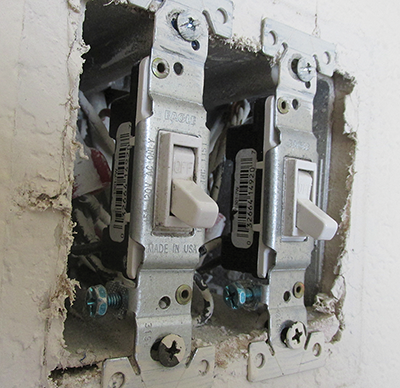
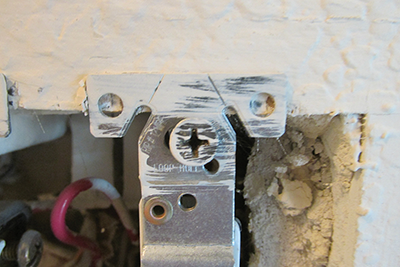
Photo 3 and Photo 4. Drywall screws used in lieu of correct screws to attach switches to nonmetallic box
Performing a Proper Installation
Doing your homework during the design phase will save you time and money and is the first step toward a safe and code-compliant installation. For example, is the panelboard you are installing outdoors rated to be used in a damp or wet environment? Are the circuit breakers listed for the cabinet in which you plan to use them? Did you effectively close all unused openings before passing this on to the new owner? Before you install a product, consider and properly answer these and many other questions. Then answer the questions again during the installation, and again at the final inspection of your project.
110.11 Deteriorating Agents. Unless identified for use in the operating environment, no conductors or equipment shall be located in damp or wet locations; where exposed to gases, fumes, vapors, liquids, or other agents that have a deteriorating effect on the conductors or equipment; or where exposed to excessive temperatures.
110.3 Examination, Identification, Installation, and Use of Equipment.
(B) Installation and Use. Listed or labeled equipment shall be installed and used in accordance with any instructions included in the listing or labeling.
110.12 Mechanical Execution of Work.
(A) Unused Openings. Unused openings, other than those intended for the operation of equipment, those intended for mounting purposes, or those permitted as part of the design for listed equipment, shall be closed to afford protection substantially equivalent to the wall of the equipment. Where metallic plugs or plates are used with nonmetallic enclosures, they shall be recessed at least 6 mm (¼ in.) from the outer surface of the enclosure.
2014 National Electric Code
Inspecting the Installation
The changes that are taking place in society require that both the installer and the inspector stay informed and up-to-date. The lives of the occupants and users of these installations demand both! Sadly, some individuals and municipalities have decided that education and training are not as important as in the past. A sour economy has placed tremendous burdens on financial budgets.
The responsibility of the inspector is to pursue proper training on a daily basis. Yes, I did say daily! Did you attend an IAEI meeting this year to ensure you received the most up-to-date information on the changes taking place in your industry? Did anyone verify that a licensed and qualified person installed the electrical installation? Was the installation set to the minimum standards of the electrical code adopted for that jurisdiction? There are numerous items on a checklist that an inspector must consider for each inspection. Can you truly say you walked away from that project assured that it was code-compliant and safe?
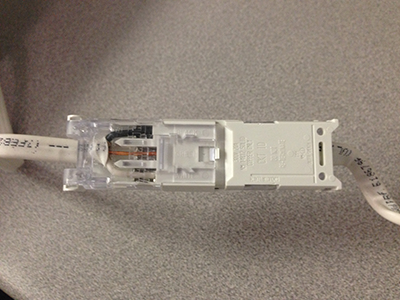

Photo 5 and Photo 6. A listed type connector for use inside a wall cavity requiring no future access provisions
Recovering from Acts of Nature
Sometimes we can do everything right, yet acts of nature, which are totally out of our control, may cause problems. Recent weather events have wreaked destruction and severe damage along our Nation’s coastlines. Hurricanes have been responsible for severe-to-moderate damage to homes and businesses. Tidal surges often result in damaged electrical wiring and equipment. The electrical system and components must be carefully examined prior to placed it back into service. In some cases the entire electrical system will need to be replaced.
Typically, each individual location must be evaluated carefully. Both the installer and the electrical inspector have a duty to the property owner to safely assess and correct these problems. When in doubt, replacement of the entire electrical system may be the only option that guarantees the safety and proper functionality of the electrical system.
Water and other contaminants affect not only what you see but also things you do not see. Wicked water can invade non-metallic-sheathed cable at distances far beyond the visible water line. Any potential invasion of water should be evaluated carefully to assure that the electrical system receives the necessary corrective actions, which might involve totally replacing the affected wiring method. At other times, the inspector may determine that only wiring up to a certain height will need to be replaced; in which case, proper splicing techniques will need to be used. Accessible junction boxes will need to be installed as future access points to these wiring terminations.
Several available products allow the repair of this type of condition and are allowed to remain inaccessible and covered behind the wall. These products have been tested and listed only for the purpose of repairing the conditions outlined above. These products are not to be used if the entire wiring system is to be replaced from the damaged area back to an accessible location.
The contents of a tidal surge can also damage an electrical system. Salt, silt, dirt, oil, gasoline, sand, and other contaminants can begin to deteriorate the components of an electrical system. This contamination may take months to cause damage that will produce an unfavorable electrical condition. Premature conduit life and performance, failure within conductor terminations, or inability of overcurrent devices to perform properly can be major concerns for the installer, the inspector, and, ultimately, for the homeowner. A word of caution: erroneous information is being circulated by some individuals who are inspecting and evaluating these systems. For example, spraying the components down with lubricants, as they claim, does not make everything okay. This false sense of security has resulted in later failure of the components.
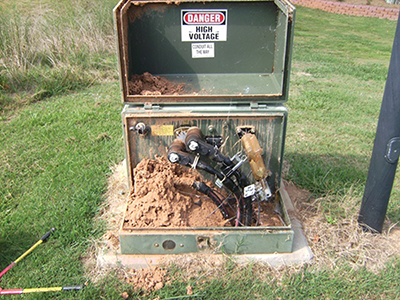
Photo 7. Fire ants nesting inside transformer
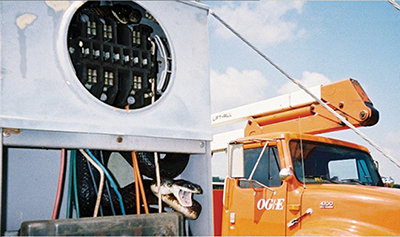
Photo 8. Unhappy snake, maybe he is being forceable evicted
Numerous such acts of nature remain out of our control, some of which are non-predictable and can occur without warning. People living in the Midwest know all too well the effects of devastating tornadoes. People along the West Coast experience earthquakes and other seismic events from time to time. Lightning strikes throughout Florida and other areas experiencing thunderstorms cause several million dollars of damage to property each year. Each of these events can cause unknown damages to the electrical system. The only way we know what damage has occurred is through proper evaluation by a qualified individual.
Documents outlining the dangers and required courses of action are available from the National Electrical Manufacturers Association (NEMA) as well as through a partnership between IAEI and UL to help guide both installers and inspectors with warnings and safety recommendations when handling electrical equipment that has been exposed to water. NEMA’s guide is entitled Evaluating Water-Damaged Electrical Equipment. IAEI/UL’s guide is entitled After the Storm.
Another example of act beyond our control are drivers who plows their vehicles into traffic control cabinets, utility poles, electrical substations, and, in some cases, into homes and businesses. Even though numerous such events occur, as installers or inspectors, we must follow the guidelines at our disposal; and when we get the call, return to evaluate, repair or replace an electrical installation.
Avoiding Unqualified Modifications
Changes or modifications often are needed after a code-compliant installation has been finished. In a perfect world, the client would contact a licensed or qualified electrical contractor to undertake the work, who then would contact the local electrical inspector and apply for the proper electrical permits. Inspections would be done; and all would be right with the world.
Unfortunately, many times this is not how it works. Unlicensed and unqualified individuals undertake some of this work and leave behind non-compliant and unsafe modifications to an otherwise code-compliant safe installation. Worse yet, homeowners who sincerely want a safe and code-compliant installation but do not possess the necessary skills or the knowledge, attempt to do the modifications themselves.
For example, consider a homeowner who finds that one of the exterior receptacles no longer works. Therefore, he switches off the circuit breaker and removes the existing receptacle, taking it to the local hardware store. He prides himself on not asking for help, and he soon finds the exact receptacle and makes his purchase. He then returns home, replaces the receptacle, and turns on the circuit breaker. Everything works properly again and the homeowner is satisfied that he has completed a code-compliant installation.
Had an electrical inspector been involved, the homeowner might have been notified that the receptacle being replaced now required ground-fault protection, or that the receptacle needed to be a weather-resistant type. Yet, in this scenario, the homeowner believes he has done what needed to be done and all is safe. Sadly, however, the homeowner does not know the latest requirements of the National Electric Code that are in place to protect him and his family.
406.4 General Installation Requirements. Receptacle outlets shall be located in branch circuits in accordance with Part III of Article 210. General installation requirements shall be in accordance with 406.4(A) through (F).
(D) Replacements. Replacement of receptacles shall comply with 406.4(D)(1) through (D)(6), as applicable. Arc-fault circuit-interrupter type and ground-fault circuit interrupter type receptacles shall be installed in a readily accessible location.
(3) Ground-Fault Circuit Interrupters. Ground-fault circuit-interrupter protected receptacles shall be provided where replacements are made at receptacle outlets that are required to be so protected elsewhere in this Code.
(6) Weather-Resistant Receptacles. Weather-resistant receptacles shall be provided where replacements are made at receptacle outlets that are required to be so protected elsewhere in this Code.
2014 National Electric Code
There are countless stories of unqualified individuals passing themselves off as qualified installers. This is an industry problem that many jurisdictions and states are finding difficult to address because, typically, there are not enough resources available to investigate every occurrence.
Even though proactive response is always more effective than reactive response, many still do not understand that truism. A competent and proactive jurisdiction has the electrical inspector enforcing the most up-to-date requirements of the code. Enforcing the most recent codes increased the potential to reduce electrical related fires, thereby reducing responses from emergency personnel.
This is where timely adoption of the latest version of the NEC is critically important. Members of the nineteen code-making panels review and discuss these proposed changes brought about by public input before deciding to incorporate them into the Code or to reject them. These industry experts have helped to make and mold the document we have today.
NFPA works very proactively to get this message out to the states and to local municipalities. NFPA staff members routinely address governing bodies about the necessity of adopting the newest version of the NEC, and their efforts are beginning to bear fruit throughout the United States.
Certain entities lobby strongly against new Code adoptions, with costs being the basis of their argument. Conversely, the safety of the occupants of these structures and a proactive response to prevent these life-threatening occurrences in the first place should be the correct path we take.
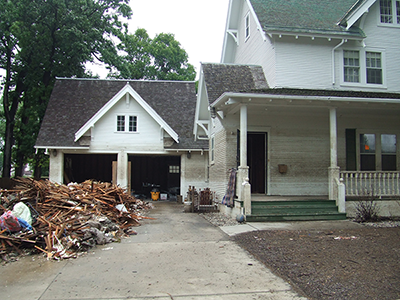
Photo 9. Flooding to a home in the midwest part of the United States. A visible water line is evident showing the height of the water during the flood. Extensive damage has occurred. Photo courtesy of Don Iverson, NEMA
Establishing Preventative Maintenance
Let’s face it, electrical equipment will not last forever! Because this equipment is often not visible, we do not think about it — until the lights will not function, or the heat or air conditioning is absent.
In a perfect world, electrical equipment would receive preventative maintenance inspections at least yearly. These inspections would help expose any deficiencies that might have begun to develop and expose the damage from events that had happened since the last inspection.
Aging electrical systems can cause deterioration due to many issues. Wire terminations become loose and excessive heat develops. Circuit breakers weaken and may trip more often. Often, if the circuit breaker fails, a replacement is installed; and no other inspection of the system is done (if an inspection is done at all).
Unused openings in the equipment allow insects or other animals to enter boxes, cabinets, panelboards, etc. Who can blame them? It is typically a warm dry place with no disturbances and plenty of heat. Oftentimes the installer and inspector are called to repair a failure when one of these unwanted occupants makes contact with the wrong conductor or component, resulting in an unwanted short circuit. Typically, the system then requires excessive work to be brought back up to Code.
Some property owners seek periodic inspections of their electrical equipment. There are contractors who specialize in conducting these inspections and providing a report of the systems and any deficiencies that might be present. These inspections have alerted the owners to potential problems, allowing them to schedule repairs before a failure occurs. This focus on inspections has averted many hours of lost production and prevented replacement of entire electrical systems.
Many utility companies also utilize a preventative maintenance program to review their electrical system. Some offer these services to their customers as a form of customer service. Extending this service to their customers also protects the utilities’ electrical system from some of these potential failures.

Photo 10. Ice storm in Springdale, Arkansas. The power line that can be seen in the background is unharmed at this point.
Federal laws have mandated that utility companies conduct certain inspections on a yearly basis. Inspections of overhead conductors help to identify dangers to utility lines — such as trees, which may not cause a problem until high winds occur, or until icy conditions cause the trees to sag into the energized conductors.
Conclusion
Most installers and inspectors do not need a reminder of how important this work is, but we all can use a productive pep talk from time to time. Our fingerprints are all over a project. Every time we drive by that job, we see what we either installed or inspected. How do you feel when you look at that installation? Are you proud, or does a cloud of shame come into your conscience?
We as installers and inspectors must strive for perfection on a daily basis!
The electrical industry has provided us many tools to use in producing and maintaining an electrical installation that can be enjoyed for many years of safe and productive service.











Find Us on Socials